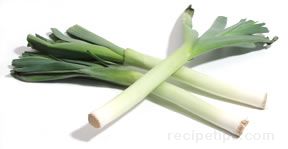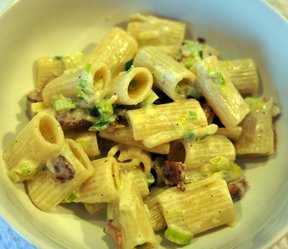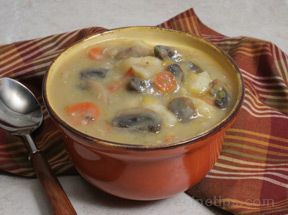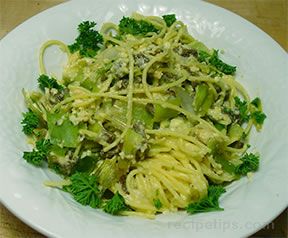Leeks are eaten fresh or cooked and added to other dishes, providing a sweet and somewhat earthy flavor that is much milder than an onion. A leek is used to enhance the flavor of salads, soups, stews, quiches, or meat and vegetable casseroles. Raw leeks are typically used as an ingredient in salads, dips and some sauces. Available throughout the year, leeks can be baked, braised in wine or a broth, stir fried, or microwaved. When selecting leeks, look for those that are fresh, without blemishes and are small to medium in size. Since leeks are grown in sandy soil, they need to be cleaned thoroughly before being eaten. The sand can become trapped within the leafy layers of the leek, which may cause the vegetable to become gritty. To clean, remove the leaf end of the leek and the rootlets at the base or root end. A cut made close to the root end will keep the stem of the leek intact, otherwise it starts to fall apart. If the leek is to be sliced lengthwise, cut down the center of the stem beginning at the bulb end. The layers of the leek can then be separted to be washed thoroughly to remove any remaining grit. Chop or slice into the desired pieces. Leeks can be stored for a week or less if securely wrapped in plastic and placed in the refrigerator. Wild leeks, known as "ramps" are also available as a smaller version of the common leek. Ramps, which are smaller in size and have a bulb topped with pointed leaves, provide a spicy peppery flavor that is stronger than the flavor of the leek. This variety of leek is often served in salads or egg and potato dishes.
Loading
Leeks
A vegetable, which is a member of the onion family, that has an appearance similar to a scallion. Long and round in shape, the stem of the leek is white at the root end and becomes increasingly darker green toward the top which is surrounded by stiff green or blue-green leaves, depending on the variety. Unlike the onion, the bulb that develops on the root end forms only a very slight rounded appearance rather than a wider ball-shaped bulb.
USDA Nutrition Facts | |||||||||||||||||||||||||||||||||||||||||||||||||||||||||||
|
|||||||||||||||||||||||||||||||||||||||||||||||||||||||||||
There currently aren't any reviews or comments for this term. Be the first!
Advertisement
Advertisement












